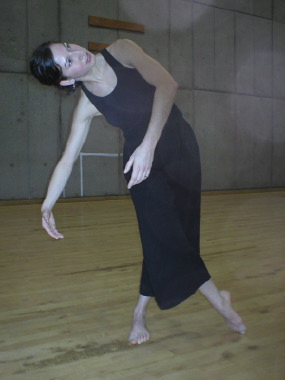|
For Ebert, being a dancer is about being aware. She pays a lot of attention to what the other dancers are doing around her. "In a studio, you're always with someone else," Ebert says. "It's not like I could go off on my own and practice, like how you practice your scales in music." Ebert works to create unity within the group, exploring the relationship she has with her teacher, the choreographer and the musician. "The tendency is to get so focused on, 'OK, I'm doing this, I'm watching myself in the mirror, I want to make sure I'm doing it correctly,' and you lose sight of the rest of the classroom," Ebert says.
As a young girl in Kankakee, Ebert studied at a small dance school, one of two in a town of 40,000 people. Her school was classy compared to the other one, but it wasn't rigorous enough to launch a career in classical ballet. When Ebert was 13 years old, her parents finally let her start taking jazz and tap classes in addition to ballet. When Ebert reached high school, a majority of the students in her school were African-American, and she became involved in hip-hop dancing. As a "pom pom girl," she was part of a group that performed at school dances. |
